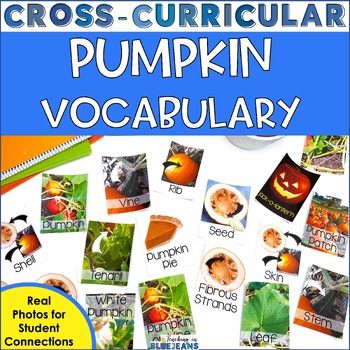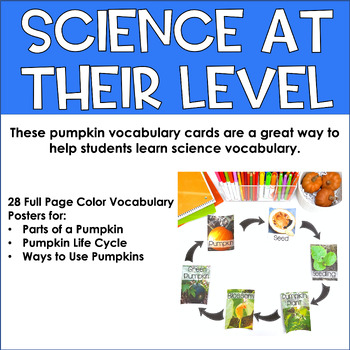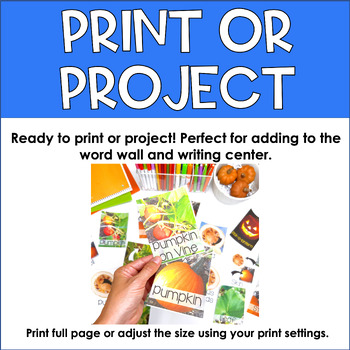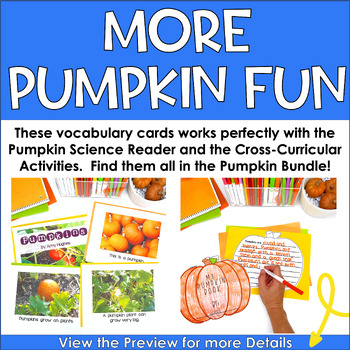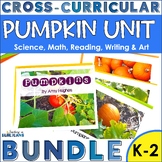Pumpkin Life Cycle & Parts of a Pumpkin Photo Vocabulary Cards Fun Fall Science
- PDF
Also included in
- Grab these best selling pumpkin resources in one bundle! The Pumpkin Vocabulary Cards and the Pumpkin Emergent Reader are the perfect addition to your fall pumpkin lessons! Plus get 13 hands-on science, math, reading, writing and activities that can only be found in this bundle. Whether you are learPrice $6.50Original Price $9.00Save $2.50
Description
Looking for a fun way to teach your students all about pumpkins, the parts of a pumpkin and the pumpkin life cycle? Bring pumpkins to life in your classroom with these vivid and colorful real photographs that are paired with key pumpkin vocabulary! Whether you are learning about the pumpkin life cycle, learning about the parts of a pumpkin, doing an entire pumpkin science unit or just engaging students in learning using pumpkins, these vocabulary cards are a must have! No fluff here - just real life and real fall vocabulary. Whether you teacher Pre-K or Kindergarten, or older students in 1st Grade, 2nd Grade or even 6th Grade, your students will benefit from making real life connections. The bold, bright pictures and simple design make them perfect for students with special needs and learning disabilities too. This is a must have set if you are learning about pumpkins!
Grab these Pumpkin Vocabulary Cards in the Pumpkin BUNDLE and get more engaging and hands-on pumpkin activities at a discount!
Pumpkin Life Cycle Vocabulary Cards Includes:
- 28 color vocabulary cards in 8.5 x 11 size
NOTE: A few of the cards are picture "duplicates" using different vocabulary that are common in teaching pumpkins. For example you get a card labeled 'shell' and a card labeled 'skin'. You can choose the card that best meets your needs.
In this .pdf download you will receive beautiful 8.5 x 11 colorful vocabulary cards/posters that you can use to enhance your lessons. With 28 total cards you will have everything you need to help your students make real world connections during your pumpkin unit.
Pumpkin Vocabulary Cards Included for:
- Lifecycle of a Pumpkin
- Parts of a Pumpkin
- Other types or uses for pumpkins
Perfect For:
- Word Wall
- Bulletin Board
- Science Center
- Anchor Chart
- Student Notebooks (Print Smaller)
All cards are formatted for 8.5 x 11 but can easily be printed smaller using the print functions on your computer. Suggestions for how to do this are included.
See What Other Teachers Are Saying . . .
⭐ This was a nice visual to use during our Pumpkin unit! We also used it in our writing and reading centers!!
⭐ Amazing vocabulary resource, my first graders absolutely loved them. So easy to read and use for visual cues.
⭐ I looked at a lot of vocabulary cards before I chose this set. They were an excellent addition to my Pumpkin unit. I love that they are real pictures!
More Fun and Engaging Fall Resources
⭐ Follow Me and be notified when new resources are added. New classroom resources are always 50% off for the first 24 hours! ⭐
Teaching in Blue Jeans Site | Connect with me on Instagram | Follow on Facebook

